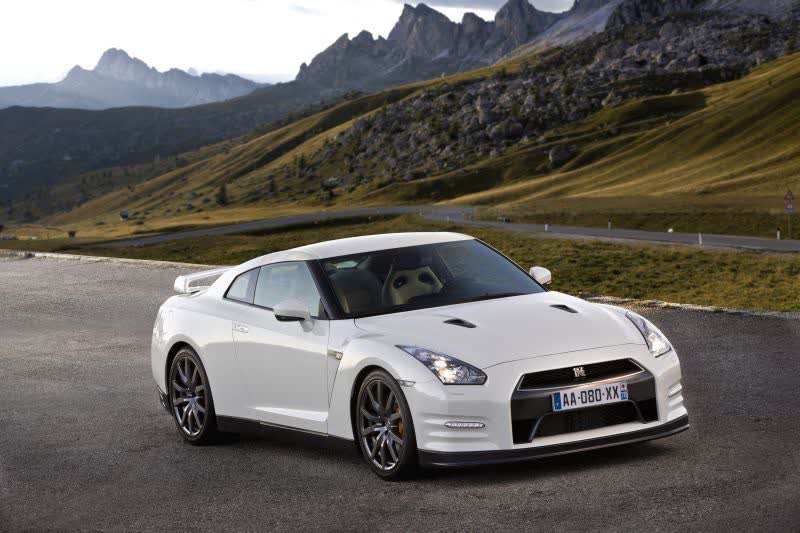Everything you need to know about specifications and performance - Nissan GT-R 2010 - 3.8 V6 (530 Hp) AWD DCT

Overview:
What is the engine capacity of a Nissan GT-R 2010?
The engine capacity of the Nissan GT-R 2010 is 3799.
Nissan GT-R 2010 How many horsepower?
The engine power of the Nissan GT-R 2010 is 530 Hp @ 6400 rpm..
What is the Nissan GT-R 2010 engine?
Nissan GT-R 2010 engine is VR38DETT. (Click to see other cars using the same engine)
How much gasoline does a Nissan GT-R 2010 consume?
The Nissan GT-R 2010 consumes 12 liters of gasoline per 100 km
What is the recommended oil for a Nissan GT-R 2010 engine?
The recommended oil for a Nissan GT-R 2010 car engine is 0W-40 / 10W-40.
What type of camshaft transmission system is used in a Nissan GT-R 2010 engine?
chain is used to transmit motion.
General:
Brand: Nissan
Model: GT-R
Generation: GT-R (R35, facelift 2010)
Modification (Engine): 3.8 V6 (530 Hp) AWD DCT
Start of production: November, 2010
End of production: 2012
Powertrain Architecture: Internal Combustion Engine
Body type:Coupe
Seats: 4
Doors: 2
Engine:
Power: 530 hp @ 6400 rpm.
Power per litre: 139.5 hp/l
Torque: 612 nm @ 3200-6000 rpm.
Engine Model/Code:VR38DETT
Engine displacement: 3799
Number of cylinders: 6
Engine configuration: V-engine
Number of valves per cylinder: 4
Fuel injection system: Multi-port manifold injection
Engine aspiration: Twin-Turbo, Intercooler
Valvetrain: DOHC
Engine oil capacity: 5 l
Coolant: 11 l
Engine layout: Front, Longitudinal
Cylinder Bore: 95.5 mm
Piston Stroke: 88.4 mm
Compression ratio: 9:1
recommended engine oil: 0W-40 / 10W-40
oil change interval: 10000
euro standards: Euro 5/6
engine lifespan (km): ~200 000
weight (kg): 225
timing drive: chain
Performance:
Fuel Type: Petrol (Gasoline)
Fuel consumption (economy) - urban: 17.3 l/100 km
Fuel consumption (economy) - extra urban: 8.9 l/100 km
Fuel consumption (economy) - combined (NEDC): 12 l/100 km
Fuel consumption (economy) - urban (NEDC): 17.3 l/100 km
Fuel consumption (economy) - extra urban (NEDC): 8.9 l/100 km
Fuel consumption (economy) - combined: 12 l/100 km
Emission standard: Euro 5
Acceleration 0 - 100 km/h: 3.1 sec
Acceleration 0 - 62 mph: 3.1 sec
Maximum speed: 315 km/h
Weight-to-power ratio: 3.3 kg/Hp, 304.6 Hp/tonne
Weight-to-torque ratio: 2.8 kg/Nm, 351.7 Nm/tonne
Acceleration 0 - 60 mph: 2.9 sec
Space:
Kerb Weight (kg): 1740
Max. weight (kg): 2200
Max load (kg): 460
Trunk (boot) space - minimum: 315 l
Fuel tank capacity: 74 l
dimensions:
Length: 4670 mm
Width: 1895 mm
Height: 1370 mm
wheelbase: 2780 mm
Front track: 1590 mm
Rear (Back) track: 1600 mm
Ride height (ground clearance): 105 mm
Minimum turning circle (turning diameter): 11.4 m
Approach angle: 9.8°
Departure angle: 16.5°
Powertrain, Suspension and Brakes:
Drivetrain Architecture: The Internal combustion Engine (ICE) drives permanently the four wheels of the vehicle.
Drive wheel: All wheel drive (4x4)
Number of gears and type of gearbox: 6 gears, automatic transmission DCT
Front brakes: Ventilated discs, 390 mm
Rear brakes: Ventilated discs, 380 mm
Assisting systems: ABS (Anti-lock braking system)
Steering type: Steering rack and pinion
Power steering: Hydraulic Steering
Tires size: Front wheel tires: 255/40 R20
Wheel rims size: Front wheel rims: 9.5J x 20
Front suspension: Double wishbone, Transverse stabilizer
Rear suspension: Independent multi-link suspension, Transverse stabilizer
See also

Other generation.
Its production began in 2019 until 2023
Write a comment